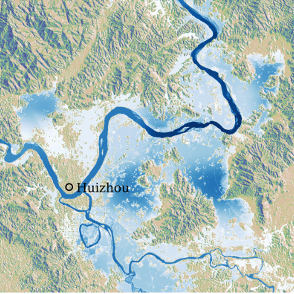Reporting on climate-related risks and opportunities is increasingly required by regulators, clients and investors. The recommendations by the Task Force on Climate-Related Disclosures (TCFD) are a key instrument in addressing this need. What is TCFD reporting, how should companies go about it, and what qualitative and quantitative content can be expected?
Where does it come from, where is it headed?
Climate reporting based on the recommendations developed by the Task Force on Climate-Related Disclosures (TCFD) aims at helping stakeholders assess risks companies face in relation to climate change. Given its explicit reference to financial disclosure, primary users of TCFD-related disclosure will most probably be investors, lenders, and insurance underwriters. In addition, climate reporting based on TCFD also provides corporate management with a more comprehensive risk landscape, helping them to execute their fiduciary duty. While the task force as a body has been dissolved recently, from 2024 on the IFRS Foundation takes over monitoring of the progress on companies’ climate-related disclosures from the TCFD. According to the IFRS Foundation, the IFRS S2 standard fully incorporates the recommendations of the TCFD.
Given the kinship with the only truly global financial reporting standards under the roof of the IFRS Foundation, the importance of reporting against the TCFD recommendations is evidenced by the recent Swiss regulatory mandate on climate disclosure for large companies. This mandate, which deepens the requirements under the Swiss Code of Obligations for non-financial reporting in regard to climate issues, not only requires companies to disclose a climate transition plan but clearly states that reporting based on the TCFD recommendations shall be assumed to be in accordance with the legal mandate – otherwise a company has to demonstrate compliance explicitly or declare and justify non-compliance (“comply or explain”).
Criteria rather than rules
There are different types of corporate disclosure, those based on criteria which allow for significant flexibility (often referred to as being «principles-based»), and those grounded in rules with checklists and strict indicator protocols such as prescribed data tables, («rules-based accordingly»). It is important that corporate report preparers are aware that TCFD reporting currently falls squarely into the former group (while e.g., reporting compliant with CSRD/ESRS will add more structure on climate-related disclosures). This is one of the first things we share with companies which approach us concerning TCFD reporting and request the table and list templates they need to complete – such a “fill in the blanks” approach is not how TCFD-reporting works or can be successfully addressed.
The 11 recommendations developed by the TFCD come in four pillars – governance, strategy, risk, and metrics & targets. The sequence of these four pillars shows that the architects of TCFD considered qualitative items as necessary in order to provide context to the quantitative items typically to be found in companies’ climate reports e.g., carbon emissions. The recommendations within the first three pillars – governance, strategy, risk – ask companies to disclose the division of responsibilities regarding climate issues across the organization, show how corporate strategy accounts for climate-related issues, and how climate is integrated into the corporate risk process. Only once these foundations and capabilities are addressed and explained, quantitative metrics and targets are asked for. Here it is to be noted that the TFCD, while being understood to ultimately be about “Financial Disclosures”, only specifies very few physical numbers, mainly the different scopes of carbon emissions. To what extent the company then converts GHG emissions and the outlooks of different climate scenarios (that form an integral part of TCFD) into financial terms is left rather open. While this can be done as some companies have shown, getting the variables in different scenarios to show financial outcomes requires thorough methodological crafting and is anything but trivial.
Capabilities as the key objective
This structure and emphasis of TCFD reporting allows the report users, primarily in financial markets but also beyond, to understand whether a company has a strategy for dealing with climate risks, has the ability to execute on that strategy, and can recognize changes in climate-related risks early on and react as needed.
This approach makes a lot of sense if one considers the significant uncertainties not only of climate change itself but more so of their impact on corporate risks and opportunities. A value at risk number or similar indicators alone could be expected to be much too uncertain for financial market participants to make decisions on how – or whether – to work with a specific company. In contrast, requiring that companies as investees in investment portfolios or as partners in financial transactions have robust capabilities to deal with climate risks can be a meaningful yardstick for economic decisions.
Scenarios, including physical risk modeling
Against the background of the high uncertainties, it makes sense that the TCFD standard requires companies to disclose how they consider climate-related scenarios. The idea is not to ask them to say what will happen (that would hardly be possible) but how they would react to and thrive in possible futures. This requirement on scenario integration clearly impacts both strategy and risk management, even though in the TCFD recommendations scenarios are primarily highlighted in the strategy section. And while the TCFD provides some leeway concerning how qualitative or quantitative scenarios articulation needs to be, there is a clear trend and market expectation that the often qualitative scenario consideration in early TCFD reports is developed further and includes more quantitative information.
In all the TCFD recommendations, and clearly with regard to scenarios as well, a distinction can be made between transitory effects (changes for example in public policy or buyer or investor preferences, being potentially negative but possibly also beneficial) related to climate and physical effects of climate change (such as changing frequency and severity of storms, floods or extreme temperature events). Not only do these types of effects need to be addressed differently by corporations, but they also need to be analyzed in different ways and granularities in the scenario work that builds the base for management and reporting work.
One difference between transitory and physical effects is the importance of specific granularity. A transitory risk such as a change in tax levels could impact all companies in that jurisdiction similarly. An extreme weather event would hit a factory in an open field very differently compared to one situated next to a mountain slope. This makes mathematical modeling with significant spatial resolution especially important when addressing physical risks and opportunities.
Climate risk data models, such as the one developed by CLIMADA Technologies (see illustration) play a crucial role in providing high-resolution probabilistic climatic events inventoried through event catalogs for current and future climate scenarios. By linking this hazard information with internal asset and vulnerability data for own operations and key suppliers, detailed physical risk analyses can be performed, taking both direct and indirect impacts into account.

Simulated riverine flooding for the central Guangdong province in the industrial Pearl River Delta region of China, where a significant part of global manufacturing supply chain companies is located.
Source: CLIMADA Technologies global, upgraded river flood data set (90m x 90m) for all climate scenarios and time steps
until 2100.
The results of these analyses feed into robust risk assessments and reports that consider industry-specific financial risk metrics and valuations and are comparable across regions and sectors. An important additional aspect in climate risk analysis is the exploration of adaptation measures through cost-benefit analyses for key locations. This allows companies to develop effective strategies for managing climate risks, ensuring their longterm business success.
Governance and strategy
The TCFD architects have formulated their recommendations very consistently. When defining the recommendations, the underlying question seems to have been: «How can one recognize that a company is not just reporting on climate-related risks and opportunities as a formality, but is seriously addressing them? » The answer to that question clearly is that one would recognize this from the company’s governance and strategy.
If climate-related risks that can occur under different scenarios are important because they are issues that the company cannot control but must respond to, then it is quite plausible that the responsibility for an appropriate and timely response must be anchored in the organization with individuals or committees. Put simply, there needs to be someone who takes care of the issues of climate change, adaptation to climate change and building resilience, who manages them as far as possible and integrates them into the company’s metabolism. And does so not just in an organizational silo as CSR has been practiced over so many years, but rather in dialogue with the company’s senior management and supervisory bodies.
The same applies to strategy. In our work with our clients, we define strategy as “the overarching plan that sets the scope, direction and long-term goals of an organization to achieve competitive advantage and maximize shareholder value”. If climate-related risks and opportunities exist, then they must be included in the corporate strategy, because they are factors that influence competitive advantages and disadvantages and can among other effects have a positive or negative impact on shareholder value.
What next?
Our brief comments make it clear that TCFD is not just another form of sustainability reporting, but an example of “next-generation reporting” – reporting that expects companies to be serious and consistent, and that demands that evidence be followed by conclusive and decisive action.
TCFD requires integrative thinking and the networking of vital corporate functions such as governance, strategy and risk management. Furthermore, a compliant application of TCFD, as required in Switzerland under OR 964, requires a different “toolbox” than that needed for typical, more general sustainability reporting. It is important to recognize that the use of scenarios, the derivation of variables and how they differ in different futures, and the integration of climate risks into existing risk management systems in TCFD reporting require a different, deeper level of expertise than, for example, the determination of CO2-relevant energy consumption.
Sustainserv and CLIMADA Technologies can help you find and apply the right methods for OR 964-compliant TCFD reporting. Our climate and scenario expertise will help you take the necessary steps towards TCFD effectively and with a sense of proportion.
You can download and read this article as PDF here.
Sustainserv is a global management consulting firm that works with companies to integrate sustainability considerations into long-term strategies, everyday operations and communications. Everything Sustainserv does is designed to inspire meaningful change in the world every day.
CLIMADA Technologies is a science-based, opencore climate risk analytics organisation imparting critical insights to companies worldwide and delivering market-aligned regulatory reporting, climate data – and software as a service. CLIMADA Technologies is an ETH spin off.
Get in touch. We are happy to tell you more about it.








